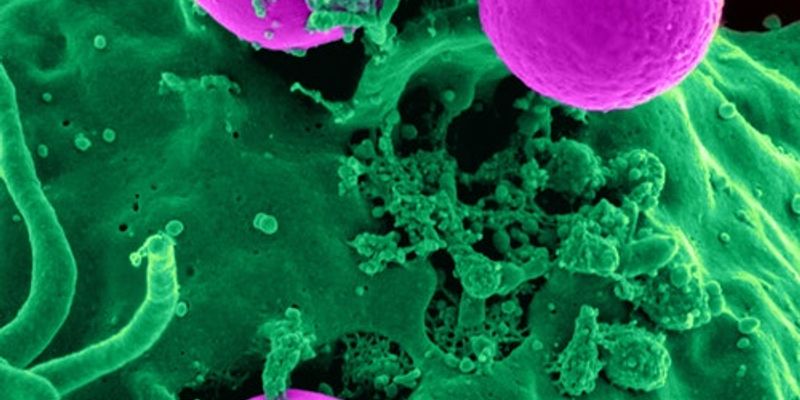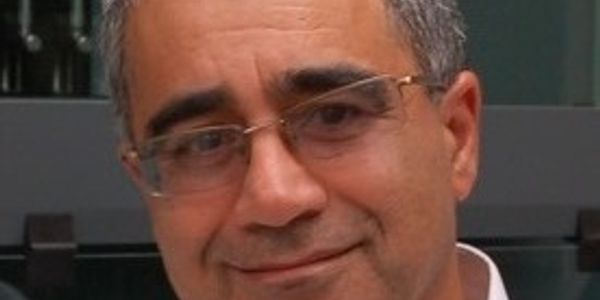Stem Cells
Stem Cells: are cells with the potential to develop into many different types of cells in the body. They serve as a repair system for the body. There are two main types of stem cells: embryonic stem cells and adult stem cells.
-
MAR 20, 2014 | 1:00 PMNeural stem cells exist in the adult mammalian brain throughout life. They reside in the subgranular layer of the dentate gyrus and in the subventricular zone. Neural stem cells have the capa...MAR 20, 2014 | 9:00 AMThe Brain Research through Advancing Innovative Neurotechnologies (BRAIN) Initiative is part of a new Presidential focus aimed at revolutionizing our understanding of the human brain. By acce...Speaker: Story Landis, PhD, Thomas R. Insel, MD, Justin Sanchez, PhD, John C. WingfieldPresented at: Neuroscience Virtual Event Series 2014
The therapeutic utility of stem cells is rooted in an understanding -- and exploitation -- of their natural role from earliest development to lifes end. Their job is first to participate in o...Speaker: Evan W. Snyder, M.D., Ph.D., F.A.A.PPresented at: Beckman Coulter Life Sciences Virtual Trade Show
Sponsored By: Beckman Coulter Life Sciences, Beckman Coulter Life Sciences
MAR 20, 2014 | 7:00 AM
The brain is a complex, densely wired circuit made out of heterogeneous cells, which vary in their shapes, molecular composition, and patterns of connectivity. In order to help discover how n...
MAR 20, 2014 | 7:00 AM
Huntington's disease (HD) is a progressive, inherited, degenerative brain disorder that produces physical, mental and emotional changes. Named for George Huntington, the physician who fi...
MAR 19, 2014 | 1:00 PM
The Willerth lab investigates how to engineer neural tissue by combining pluripotent stem cells, controlled drug delivery and biomaterial scaffolds. When generating these replacement tissues,...
MAR 19, 2014 | 10:00 AM
Discrimination against women has typically been attributed to hostile and demeaning stereotypes about womens capabilities. However, a growing body of evidence shows that subjectively positive...
MAR 19, 2014 | 7:00 AM
Down syndrome (DS) is a complex multi-system disorder affecting more than 5.8 million individuals around the world and it causes significant physical, psychological, and cognitive abnormaliti...
Non-surgical transfer techniques for mouse embryos and sperm provide animal welfare benefits for assisted reproduction of mice. While surgical embryo transfer (ET) is an effective method for...
OCT 16, 2013 | 1:00 PM
C.E. CREDITS
The remarkable diversity we see between different cell types in the human body is governed by the specificity attained through transcriptional and epigenetic regulatory programs. Cancer is a...
Speaker:
Jessica C. Mar, PhD
AUG 22, 2013 | 5:00 PM
C.E. CREDITS
Malignancies caused by so-called Type I chemical and biological carcinogens provide important opportunities studying early events in cancer development, providing essential information for de...
Speaker:
Prof. Patrick Tan, MD, PhD
Presented at: Genetics and Genomics Virtual Event Series 2013
AUG 22, 2013 | 4:00 PM
C.E. CREDITS
The next generation sequencing technologies are profoundly influencing our way to study biology. We have previously developed cap-analysis gene expression (CAGE) to simultaneously mRNA/noncod...
AUG 22, 2013 | 1:00 PM
MicroRNAs are short non-coding cellular regulators of gene expression. Each microRNA controls the expression of a large set of genes, and microRNAs collectively, may regulate more than half o...
AUG 21, 2013 | 3:00 PM
C.E. CREDITS
The remarkable diversity we see between different cell types in the human body is governed by the specificity attained through transcriptional and epigenetic regulatory programs. Cancer is a...
AUG 21, 2013 | 2:00 PM
C.E. CREDITS
The human species is particularly prone to chromosome segregation errors during maternal meiosis in the egg and during post zygotic mitosis in the preimplantation embryo. In fact, aneuploidy...
AUG 21, 2013 | 1:00 PM
C.E. CREDITS
In addition to the exciting promise that genome sequencing holds, concerns are also often described. These concerns relate to: privacy/confidentiality of findings; impact of findings on insur...
Our ability to view and alter biology is progressing at an exponential pace -- faster even than electronics. Next generation sequencing can be used to assess inherited, environmental and epi-...
The Project (PersonalGenomes.org) enables open observation and critique of a large cohort "test-driving" comprehensive participatory personalized medicine. This is the only fully open-access...
MAR 20, 2014 | 1:00 PM
Neural stem cells exist in the adult mammalian brain throughout life. They reside in the subgranular layer of the dentate gyrus and in the subventricular zone. Neural stem cells have the capa...
MAR 20, 2014 | 9:00 AM
The Brain Research through Advancing Innovative Neurotechnologies (BRAIN) Initiative is part of a new Presidential focus aimed at revolutionizing our understanding of the human brain. By acce...
Speaker:
Story Landis, PhD, Thomas R. Insel, MD, Justin Sanchez, PhD, John C. Wingfield
Presented at: Neuroscience Virtual Event Series 2014
The therapeutic utility of stem cells is rooted in an understanding -- and exploitation -- of their natural role from earliest development to lifes end. Their job is first to participate in o...
Speaker:
Evan W. Snyder, M.D., Ph.D., F.A.A.P
Presented at: Beckman Coulter Life Sciences Virtual Trade Show
Sponsored By: Beckman Coulter Life Sciences, Beckman Coulter Life Sciences
Sponsored By: Beckman Coulter Life Sciences, Beckman Coulter Life Sciences
MAR 20, 2014 | 7:00 AM
The brain is a complex, densely wired circuit made out of heterogeneous cells, which vary in their shapes, molecular composition, and patterns of connectivity. In order to help discover how n...
MAR 20, 2014 | 7:00 AM
Huntington's disease (HD) is a progressive, inherited, degenerative brain disorder that produces physical, mental and emotional changes. Named for George Huntington, the physician who fi...
MAR 19, 2014 | 1:00 PM
The Willerth lab investigates how to engineer neural tissue by combining pluripotent stem cells, controlled drug delivery and biomaterial scaffolds. When generating these replacement tissues,...
MAR 19, 2014 | 10:00 AM
Discrimination against women has typically been attributed to hostile and demeaning stereotypes about womens capabilities. However, a growing body of evidence shows that subjectively positive...
MAR 19, 2014 | 7:00 AM
Down syndrome (DS) is a complex multi-system disorder affecting more than 5.8 million individuals around the world and it causes significant physical, psychological, and cognitive abnormaliti...
Non-surgical transfer techniques for mouse embryos and sperm provide animal welfare benefits for assisted reproduction of mice. While surgical embryo transfer (ET) is an effective method for...
OCT 16, 2013 | 1:00 PM
C.E. CREDITS
The remarkable diversity we see between different cell types in the human body is governed by the specificity attained through transcriptional and epigenetic regulatory programs. Cancer is a...
Speaker:
Jessica C. Mar, PhD
AUG 22, 2013 | 5:00 PM
C.E. CREDITS
Malignancies caused by so-called Type I chemical and biological carcinogens provide important opportunities studying early events in cancer development, providing essential information for de...
Speaker:
Prof. Patrick Tan, MD, PhD
Presented at: Genetics and Genomics Virtual Event Series 2013
AUG 22, 2013 | 4:00 PM
C.E. CREDITS
The next generation sequencing technologies are profoundly influencing our way to study biology. We have previously developed cap-analysis gene expression (CAGE) to simultaneously mRNA/noncod...
AUG 22, 2013 | 1:00 PM
MicroRNAs are short non-coding cellular regulators of gene expression. Each microRNA controls the expression of a large set of genes, and microRNAs collectively, may regulate more than half o...
AUG 21, 2013 | 3:00 PM
C.E. CREDITS
The remarkable diversity we see between different cell types in the human body is governed by the specificity attained through transcriptional and epigenetic regulatory programs. Cancer is a...
AUG 21, 2013 | 2:00 PM
C.E. CREDITS
The human species is particularly prone to chromosome segregation errors during maternal meiosis in the egg and during post zygotic mitosis in the preimplantation embryo. In fact, aneuploidy...
AUG 21, 2013 | 1:00 PM
C.E. CREDITS
In addition to the exciting promise that genome sequencing holds, concerns are also often described. These concerns relate to: privacy/confidentiality of findings; impact of findings on insur...
Our ability to view and alter biology is progressing at an exponential pace -- faster even than electronics. Next generation sequencing can be used to assess inherited, environmental and epi-...
The Project (PersonalGenomes.org) enables open observation and critique of a large cohort "test-driving" comprehensive participatory personalized medicine. This is the only fully open-access...
















